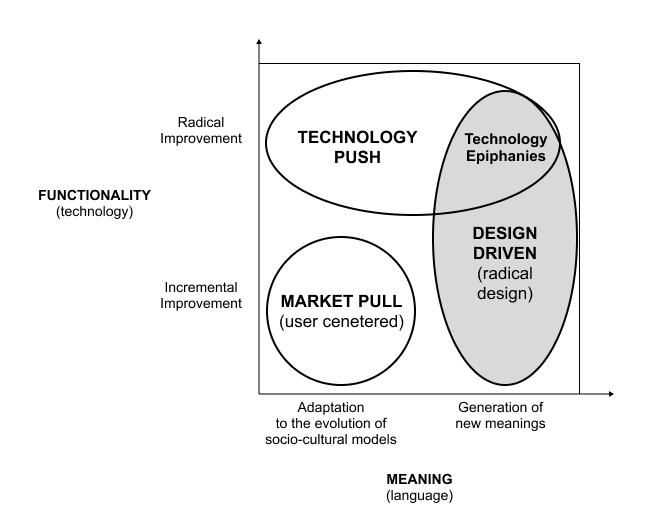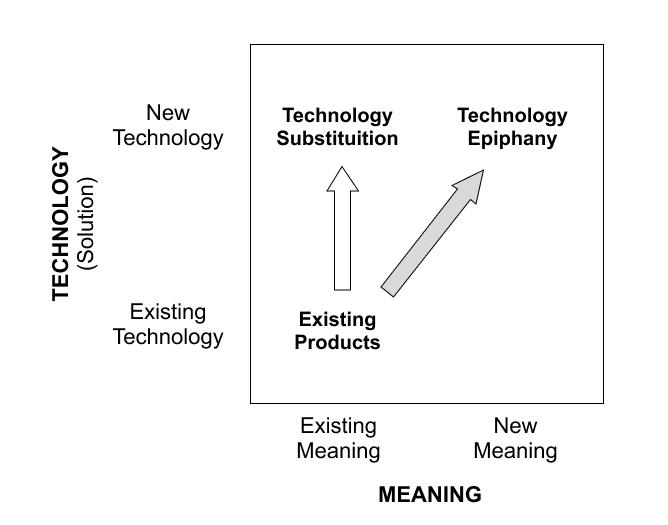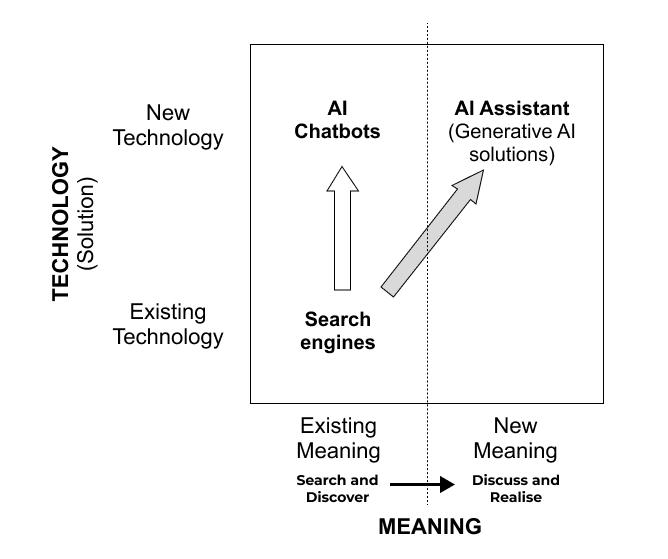How OpenAI can exploit synergies between its generative AI solutions to explore the creative potential of human and AI collaboration in creative fields
like game design
Vaishnavi KumarABSTRACT
Due to the increasing attention on the potential applications of generative AI (Dang et al., 2022), investments in AI have surged over the years. Based on the disclosed valuations as of 2022, OpenAI is at the top of the list as the most highly valued generative AI company with ChatGPT, DALL-E, among other o�erings (CB Insights, 2023).
Since the release, the conversations around the implications of ChatGPT have mixed reactions from positive feedback on the possibilities of the applications (Haque, et al., 2022) to questioning the implication of ethical human creative output, and the legitimacy of work (Susnjak, 2022; Heilweil, 2022).
Redirecting from the perspective of potential job functions this model could substitute, this paper aims to focus on how ChatGPT can push the boundaries of existing human-technological relationships for creative output to shape the way we work and the possibilities we can achieve to realise human vision
The applications of ChatGPT are several, this paper moves away from a technology-push perspective by enabling a technology epiphany to identify a new meaning proposed by OpenAI’s generative AI models- ChatGPT and DALL-E and exploiting the synergies between the two to envision the potential disruption across the creative fields of gaming, animation, marketing, and content creation. The methodology adopted for the development is through secondary research from OpenAI’s communication, research papers and books on design-driven innovation, and digital publications from research, news, and business publishers. The paper proposes how the combination of ChatGPT and DALL-E has the potential to revolutionize the way we envision and experience creative possibilities.
KEYWORDS
Generative AI, Design-driven Innovation, Human/AI Collaboration
INTRODUCTION
OpenAI’s Chat Generative Pre-Trained Transformer also known as ChatGPT uses natural language processing (NLP) to mimic human-like conversations. Helpful across a range of applications requiring generative text and coding, ChatGPT is
pushing the boundaries of AI’s possibilities that could disrupt many industries with the potential of a hybrid human/AI work (Mollick, 2022).
Since the release of ChatGPT to gather data and further train the model, trial users have explored many applications from generating stories, jokes, TV episodes, (Heilweil, 2022) poems, and blog posts to composing music, imitating Linux, playing games, and simulating an ATM. (Edwards, 2022)
There are also limitations of the technology that must be considered to evaluate the applications. ChatGPT is trained using Reinforcement Learning from Human Feedback (RLHF) where human AI trainers supervise and improve the quality of the output through reinforcement learning based on reward models (OpenAI, 2023).
Consisting of internet phenomena, and man pages, among others,(Edwards, 2022) the training data plays a major role in the output of the model, the model also uses keywords from the input to interpret the question which could give rise to biased or incorrect output. Even though ChatGPT is trained to refuse inappropriate requests, there is still a long way to go for the model to learn this behavior.
DALL-E on the other hand is a deep learning model developed by OpenAI that creates digital images for a wide range of concepts from natural language descriptions called “prompts” which allow users to combine unrelated concepts convincingly from rendering text to applying transformations to existing images (OpenAI, 2022).
The applications of ChatGPT and DALL-E have brought ethical questions to di�erent fields of application such as plagiarism, exam integrity (Susnjak, 2022), and the impact on work processes and professions as we know them (OpenAI, 2022). OpenAI admits in its original blog announcing the release of DALL-E that the team is still analysing how these models relate to societal issues, the potential for bias in model outputs, and the ethical implications of the technology.
The introduction of ChatGPT and DALL-E is challenging the boundaries of human and technological capabilities. This paper aims to push it to the next level by understanding what this hybrid human/AI work looks like and how can ChatGPT disrupt the current value-creation landscape across industries as we know it.
DEVELOPMENT:
The applications of ChatGPT are several, this paper aims to move away from a technology-push perspective by enabling a technology epiphany by identifying a new meaning proposed by OpenAI’s generative AI models- ChatGPT and DALL-E and applying it to envision the disruption across the creative fields of gaming, animation, marketing, and content creation.
Shifting the focus on technology epiphany:
ChatGPT can support the IT strategy of companies by improving productivity and reducing costs. A logical next step for the implementation of ChatGPT. OpenAI could
pursue a juxtaposition of technology-push and demand-pull innovation perspectives where the technology provides the trajectory of innovation and demand directs the trajectory towards the right economic venue. This is potentially what ChatGPT is trying to do by releasing the model for trial users for data gathering and understanding the potential applications based on user demand (Di Stefano et al., 2012). Technology push innovation drives radical improvement due to the functionality proposed by the new technology whereas user-centered innovation supports incremental innovation that adapts to the current evolution of the sociocultural models.
However, to explore the disruptive potential of ChatGPT, it is important to understand the change in meaning set into motion by this technology driven by technology epiphany at the intersection of technology-push and radical design. (Fig. 1, 2) Design-driven innovation explores the underlying dynamics of socio-cultural models to propose a change in the current socio-cultural models. (Verganti, 2009) ChatGPT can identify and shift the meaning of why we use AI chatbots today to introduce a new human/AI hybrid work culture.
 Figure 1: Innovation Strategies and the Positioning of Radical Design and Technology Epiphanies (Verganti, 2009)
Figure 1: Innovation Strategies and the Positioning of Radical Design and Technology Epiphanies (Verganti, 2009)
IDENTIFICATION OF THE CHANGE OF MEANING:
Drivers of change:
Due to the increasing attention on the applications of generative AI (Dang et al., 2022), investments in AI have surged over the years. Based on the disclosed valuations as of 2022, OpenAI is at the top of the list as the most highly valued generative AI company with ChatGPT, and DALL-E, among other o�erings (CB Insights, 2023). Since the release, the conversations around the implications of ChatGPT have mixed reactions from positive feedback on the possibilities of the applications (Haque, et al., 2022) to questioning the implication of ethical human creative output, and the legitimacy of work (Susnjak, 2022; Heilweil, 2022).
Redirecting from the perspective of potential job functions this model could substitute, this paper aims to focus on how ChatGPT can push the boundaries of existing human-technological relationships for creative output to shape the way we work and the possibilities we can achieve to realise human vision.
From Search and Discover to Discuss and Realise, the disruptive potential of synergies between Generative AI solutions
 Figure 2: Technology epiphanies as a driver of change of meaning (Verganti, 2017)
Figure 2: Technology epiphanies as a driver of change of meaning (Verganti, 2017)
Today, search engines and AI chatbots are used to search and discover information to make user jobs easier by providing assistance to assess and process a wide range of information. OpenAI’s ChatGPT can radically improve current work processes that are time-consuming through applications in customer relationship management, administrative tasks, compliance and regulatory tasks, research and analytics, and plagiarism detection, among others. Yet, these applications that enable IT strategy don’t exploit the full potential of what generative AI can o�er.

Just like Jeeves (Wodehouse, 1923), the highly competent valet who always has the best solution to his employer Bertie Wooster’s problems in P.G. Wodehouse’s series, the new meaning proposed by the application of generative AI exploits synergies between generative text-based solution like ChatGPT and DALL-E to help users discuss through an intuitively human conversation and realise the possibilities of creative potential which were previously impossible. OpenAI’s ecosystem of solutions could be the Watson to users’ Sherlock (Doyle, 1892), assisting in the creative discovery of possibilities.
POTENTIAL DISRUPTIVE APPLICATIONS OF THE NEW MEANING:
Let’s look at how this new meaning would change the relationship between humans and technology to achieve creative output across disciplines.
Disrupting industries to achieve the ultimate creative vision:
Figure 3: From the existing meaning to the new meaning to use generative AI chatbots.By exploiting synergies between the generative AI technologies, OpenAI’s ChatGPT and DALL-E can assist creatives in the process of creating output, the role of creatives will shift with the creative process focussed on discussing the possibilities of the solution with ChatGPT and realising the vision through educated prompts that deliver the output in-line with the brief. In the creative industries, there are several disciplines that demand tangible creative output in the form of physical or digital artifacts. The following are the industries that the new meaning could potentially disrupt by changing the roles of the creatives.
Graphic Design, Advertising, and content creation:
Graphic design involves the creation of visual content for a variety of purposes, including advertising, branding, packaging, and digital media. Graphic designers and advertisers use their skills to convey information and messages in a compelling way that promote products, services, and ideas across a variety of mediums, including print, television, radio, and digital, to create persuasive and memorable to create physical or digital artifacts that grab attention and build brand recognition. Content creation involves the creation of written and visual content for a variety of purposes, including marketing, education, and entertainment. Content creators use copy, and visuals to create engaging and informative content that informs, educates, and entertains audiences across a variety of mediums, including websites, blogs, and social media to distribute their content and reach their target audiences.
Leveraging ChatGPT and DALL-E, creatives can unleash their potential to convey ideas e�ectively. OpenAI can potentially create a model that can generate both text and images that are related to each other to generate more complex and interesting content.
Storyboards for Animation:
In animations, the combined model of ChatGPT and AI could be used to generate storyboards for animated films, where the model would generate both the text description of a scene and an accompanying image This could save time and e�ort for animators and filmmakers, who could use the generated content as a starting point for their own creative work.
Game design: Infinite storylines, infinite possibilities of game experiences
ChatGPT and DALL-E have the potential to assist game designers in their creative process for concept generation, worldbuilding, level design, and story writing to help gamers experience infinite storylines developed through human-like conversations assisted by ChatGPT and visualised by DALL-E.
How OpenAI could deliver on no man’s sky’s promise of infinite discovery: Another potential application of the new meaning that exploits the synergies between the ChatGPT and DALL-E could be the implementation of the two models in the game where players can have discussions with ChatGPT that could trigger new storylines within the game prompting DALL-E to visualise new worlds and levels. Building on the promise of No Man’s Sky’s procedurally generated universe. No Man's Sky is an open-universe video game where players can explore a universe with solar systems, planets, environments, flora and fauna and man-made structures that are procedurally generated as they progress within the game (IGN, 2014). With games enabled by ChatGPT and DALL-E models, players could potentially discuss and realise new storylines which could give rise to infinite possibilities for experiencing the game.
Here are some of the ways these models can be utilized by game designers to design the games and players to experience them:
Concept Generation: ChatGPT and DALL-E can help game designers generate new game concepts and ideas based on specific themes, genres, or mechanics. ChatGPT can suggest new storylines and characters, while DALL-E can generate unique and imaginative game environments and assets. This can help expand game designers' and players’ creative horizons by allowing them to quickly generate new and innovative ideas for the games and help players to explore new game environments.
World-Building: ChatGPT and DALL-E can assist game designers in building rich and immersive game worlds by generating detailed descriptions, characters, and lore. ChatGPT can generate in-depth descriptions of game locations, cultures, and civilizations, while DALL-E can generate unique and imaginative game environments, creatures, and objects. This can help create more engaging and believable game worlds that captivate the players
Level Design: ChatGPT and DALL-E can help game designers design and iterate on game levels and maps by generating detailed descriptions and suggestions for level layout, pacing, and challenges. ChatGPT can suggest new-level themes and challenges, while DALL-E can generate unique and imaginative level assets, such as buildings, objects, and obstacles. This can help create more engaging and dynamic game levels that o�er new challenges and experiences to players.
Dialogue and Story Writing: ChatGPT can assist game designers in writing compelling dialogue and stories for their games by generating dialogue snippets, character bios,
and story arcs. For example, ChatGPT can suggest new plot twists, character motivations, and dialogue options, and it can also help game designers refine their writing by providing feedback and suggestions on tone, pacing, and style. ChatGPT could also suggest new story arcs to players within the game through conversations and prompts from the discussions.
Playtesting: ChatGPT can help game designers improve their games through playtesting by suggesting ways to optimize gameplay, balance challenges, and enhance player engagement. For example, ChatGPT can provide feedback on game mechanics, level design, and player behavior, and it can also suggest alternative approaches to improving the game design.
CONCLUSION:
In conclusion, ChatGPT and DALL-E have the potential to greatly enhance the creative process of creatives by providing them with new ideas, inspiration, and tools to create innovative and engaging outputs by changing the existing meaning of AI technology from searching and discovering to discussing and realising the ultimate creative vision through these models that have the potential to help creatives take their vision to new heights and reach a wider audience. Overall, the combination of ChatGPT and DALL-E has the potential to revolutionize the way that creative content is created, making it faster and easier for people to generate high-quality content across a variety of platforms and applications enabling a new hybrid human/AI work paradigm. The implementation of the two models could also potentially change the gaming experience by allowing players to discuss with ChatGPT and realise infinite possibilities to experience the game.
References
Mollick, E. (2022, December 14). Chatgpt is a tipping point for AI. Harvard Business Review.
https://hbr org/2022/12/chatgpt-is-a-tipping-point-for-ai
OpenAI. (2023, January 25). CHATGPT: Optimizing language models for dialogue. OpenAI.
https://openai.com/blog/chatgpt/
Edwards, B (2022, December 5) NLinuxux? no problem just get ai to hallucinate it for you Ars Technica.
https://arstechnica.com/information-technology/2022/12/openais-new-chatbot-can-halluci nate-a-linux-shell-or-calling-a-bbs/
Heilweil, R. (2022, December 7). Ai is finally good at stu�, and that's a problem. Vox.
https://www.vox.com/recode/2022/12/7/23498694/ai-artificial-intelligence-chat-gpt-opena i
Susnjak, T. (2022, December 19). CHATGPT: The end of online exam integrity? arXiv.org.
https://arxiv.org/abs/2212.09292
Di Stefano, G., Gambardella, A., & Verona, G. (2012). Technology push and demand pull perspectives in Innovation Studies: Current findings and Future Research Directions. Research Policy, 41(8), 1283–1295. https://doi.org/10.1016/j.respol.2012.03.021
Verganti, R. (2009). Design-Driven Innovation: Changing the rules of competition by radically innovating what things mean. Harvard Business Press.
Verganti, R. (2017). Overcrowded: Designing meaningful products in a world awash with ideas. The MIT Press
CB Insights. (2023, January 26). The state of Generative AI in 7 charts. CB Insights Research. https://www.cbinsights.com/research/generative-ai-funding-top-startups-investors/
https://www forbes com/sites/bernardmarr/2023/01/25/how-dangerous-are-chatgpt-and-n atural-language-technology-for-cybersecurity/?sh=1495937a4aa6
Dang, H., Mecke, L., Lehmann, F., Goller, S., & Buschek, D. (2022). How to Prompt?
Opportunities and Challenges of Zero- and Few-Shot Learning for Human-AI Interaction in Creative Applications of Generative Models. ArXiv. https://doi.org/10.48550/arXiv.2209.01390
Wodehouse, P. (1923). The Inimitable Jeeves. Herbert Jenkins.
Doyle, A C (1892) The Adventures of Sherlock Holmes George Newnes
OpenAI. (2022, June 9). DallE: Creating images from text. OpenAI. https://openai.com/blog/dall-e/
Haque, M. U., Dharmadasa, I., Sworna, Z. T., Rajapakse, R. N., & Ahmad, H. (2022). "I think this is the most disruptive technology": Exploring Sentiments of ChatGPT Early Adopters using Twitter Data. ArXiv. https://doi.org/10.48550/arXiv.2212.05856
IGN (2014, June 11) No man's sky - the story, Gameplay, and Multiplayer explained IGN
https://www.ign.com/videos/no-mans-sky-the-story-gameplay-and-multiplayer-explained
